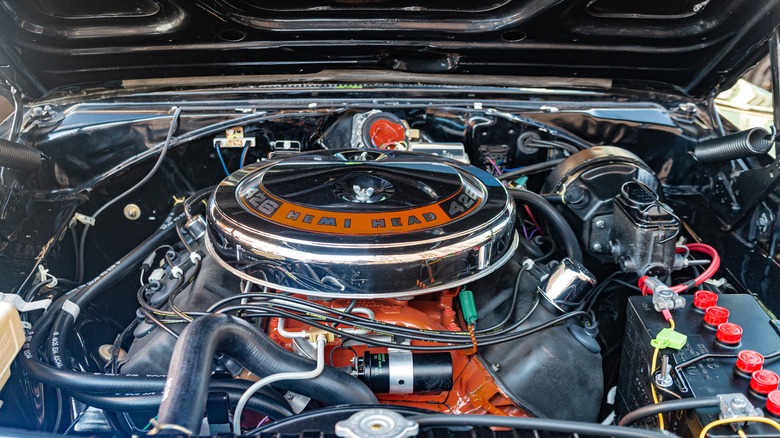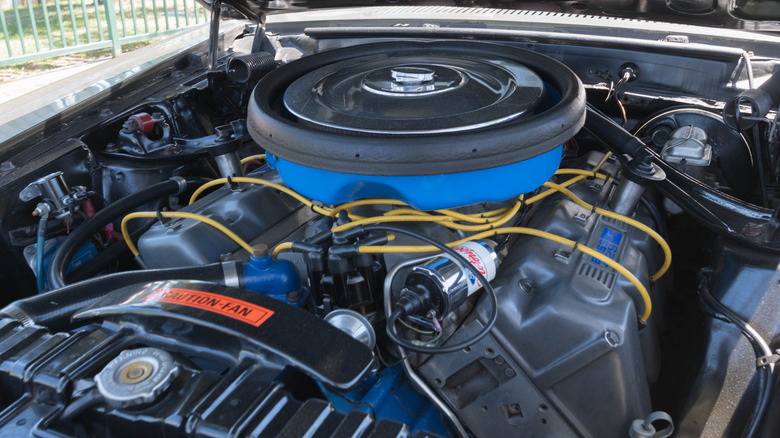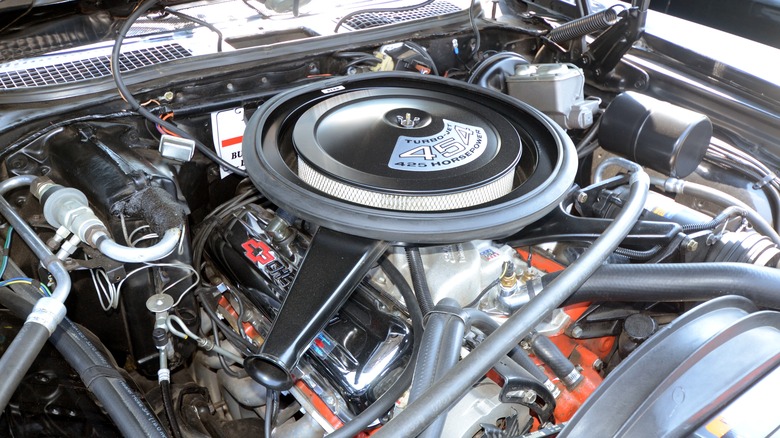Chrysler 426 HEMI Vs Chevy 454 Vs Ford 429 Boss: Which Big Block Engine Comes Out On Top?
The late 1960s and early 1970s were the golden age of muscle cars. Packed with charisma, outrageous power, and ostentatious design, they thrived during the muscle car wars of the mid-1960s. Chrysler and Dodge fueled the battle by pairing the "HEMI" with big block motors, creating the legendary 426 HEMI. Built for racing, the 426 steamrolled the competition, winning the 1964 NASCAR championship. The HEMI was so dominant that it was banned for the 1965 season. The racing HEMI was so good that it was banned for the 1965 NASCAR season. Once reinstated, HEMI engines returned to NASCAR and won in subsequent years. Taking "Race on Sunday and sell it on Monday" seriously, the 426 HEMI was equipped in various models such as the Dodge Coronet, Charger, Plymouth Belvedere, and more.
The 426 HEMI, combined with two 4-barrel 685 CFM Carter carburetors, allowed an impressive compression ratio of 10.25:1 for the production variant, while the race version had a higher 12.5:1 CR. The street version of the HEMI produced an epic 425 horsepower and 490 pound-feet of torque, an unbelievably high figure for the time.
These incredible numbers were possible only because of the hemispherical combustion chamber inspired by the P-47 Fighter aircraft's V16, which improved airflow, reduced heat loss, and allowed for higher compression ratios and efficiency. The 426 HEMI quickly achieved icon status, and even today, sought-after cars such as the Dodge Charger R/T, Dodge Challenger, and Dodge Coronet with HEMI engines command six figures. At the same time, rare models like the Plymouth 'HEMI'Cuda Convertible and the Dodge Charger Daytona can fetch millions.
Ford's Boss 429, a race-bred horse
Ford was not happy with Chrysler's domination in NASCAR and the vastly more powerful street cars. In response to the 426 Hemi, Ford introduced a new big-block motor based on the popular 385 series of engines, the Boss 429. The Boss 429 was a bigger, bored-out version of the 385 big-block, designed initially to beat the 426 HEMI at NASCAR. What's more, the Boss 429 featured a redesigned combustion chamber with angled valves canted into the revised wedge-shaped cylinder head, earning it the nickname "semi-hemi." The result was 375 horsepower and 450 pound-feet of torque in street trim. It also had a big Holley 735 CFM carburetor and boasted a compression ratio of 10.5:1.
However, people widely considered that Ford was sandbagging its power figures. In reality, it was barely a detuned version of the NASCAR engine, possibly due to concerns about rising insurance rates for high-horsepower muscle cars. Ford later rolled out the 429 Cobra Jet (CJ), Super Cobra Jet (SCJ), and Dominator — more street-friendly takes on the mighty Boss 429 that still fuel heated debates among enthusiasts over which was truly better. The Boss 429 was built primarily for racing, but Ford had to produce homologated road cars in order to compete. To achieve this, they shoehorned the massive 429 engine into the Mustang, creating the most powerful Mustang of its time, the Boss 429. With only 1,358 units ever made, it remains one of the rarest and most desirable Mustangs today.
Chevy's big bad 454
Chevrolet, arriving a little late to the big-block party, came with a bang, the biggest and baddest motor on the scene. Based on the existing 427 big-block engine found in cars like the Chevelle, Corvette, and Impala. It was bored out to 454 cu in, producing up to a whopping 465 gross horsepower and 500 pound-feet of torque in its most potent production form, thanks to a high compression ratio of 11.25:1. The 454 came in different sets of tune, denoted by LS5, LS6, and LS7, not to be confused with the modern LS naming convention. The entry-level LS5 made about 360 horsepower, while the LS6, the most powerful one mentioned above, thanks to an upgraded 800 CFM Holley carburetor, produced 465 hp, making it the most powerful engine on this list. There was an LS7 version also post-fuel/emission crisis; however, the LS7 was never officially installed in GM vehicles and was only available as a crate engine. GM reserved its most powerful 454 big-block for top-trim models; cars like the Corvette, Chevelle, and Caprice all received the legendary engine.
Though it never competed in NASCAR, given the displacement regulation that the 454 breached, instead Chevrolet used the 427 for NASCAR, with limited success compared to other engines mentioned on this list. Although the Chevelle equipped with the 454 still dominated in NHRA drag racing, especially in the Super Stock series. However, the Chevy 454's glory was short-lived, as emission regulations and rising fuel prices crashed the muscle car party completely. Of all the engines we've covered, the HEMI still stands tall, racking up the most NASCAR wins, pushing the limits of power and technology in its era, and cementing its place as a true legend.


